|
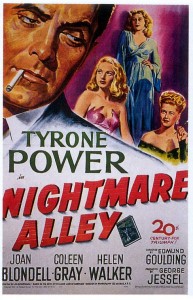
Synopsis:
An ambitious carnival worker (Tyrone Power) uses trickery and psychology to convince audiences he’s telepathic, and soon he and his beautiful young wife (Coleen Gray) have a successful nightclub act together. But when Power collaborates with an immoral psychiatrist (Helen Walker) in convincing wealthy citizens he can talk with the dead, his thirst for power comes to a head.
|
|
Genres, Themes, Actors, and Directors:
- Carnivals and Circuses
- Coleen Gray Films
- Con-Artists
- Edmund Goulding Films
- Femmes Fatales
- Joan Blondell Films
- Psychic Powers
- Rise-and-Fall
- Social Climbers
Response to Peary’s Review:
Tyrone Power gave what is widely regarded as his best performance in this memorable, well-acted tale of greed and betrayal in the carnival racket. As noted by Peary, “No [‘A’] picture of the forties projected a more corrosive atmosphere. … What other picture of the time … had geeks, dipsomaniacs, premarital sex in which the woman doesn’t become pregnant, and discussion of God?” Director Edmund Goulding portrays a truly “miserable world”, one “which mirrors the country’s post-war malaise,” and depicts “sorry people… who are deeply depressed, lonely, [and] devoid of spirit.” Despite its unconventional setting, Alley is in many ways classic noir cinema, given the presence of a love triangle (Powers, Blondell, Gray), a cagey femme fatale (Walker), and highly atmospheric b&w cinematography; indeed, Powers’ downward spiral is similar to those of every male noir protagonist who aims too high and (wrongly) thinks he can have it all. Balance is eventually restored, but not without plenty of devastation along the way. Dark, gritty, and compulsively watchable, Nightmare Alley remains must-see viewing for all film fanatics.
Redeeming Qualities and Moments:
- Tyrone Powers as Stan

- Joan Blondell as Zeena
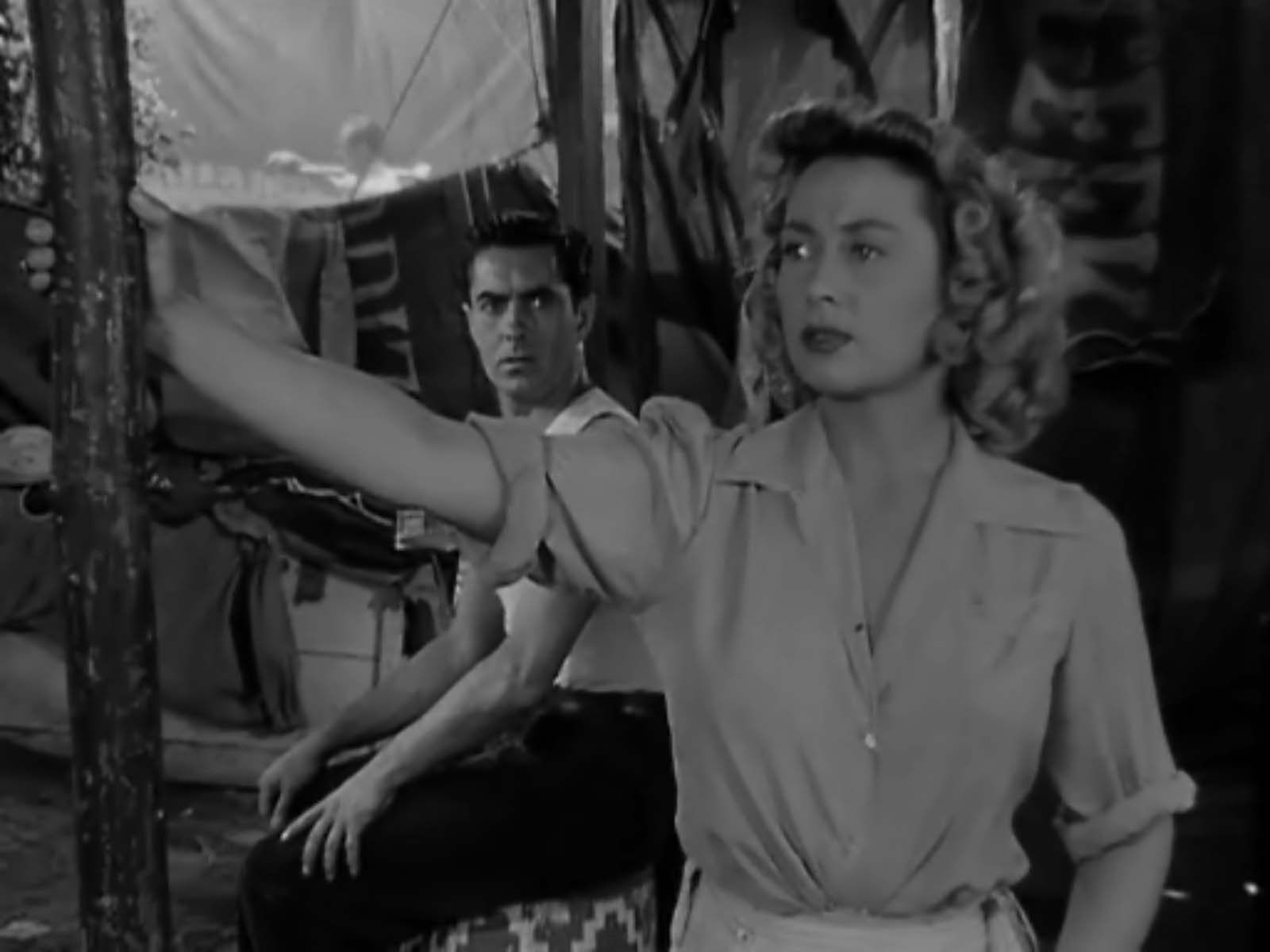
- Colleen Gray as Molly
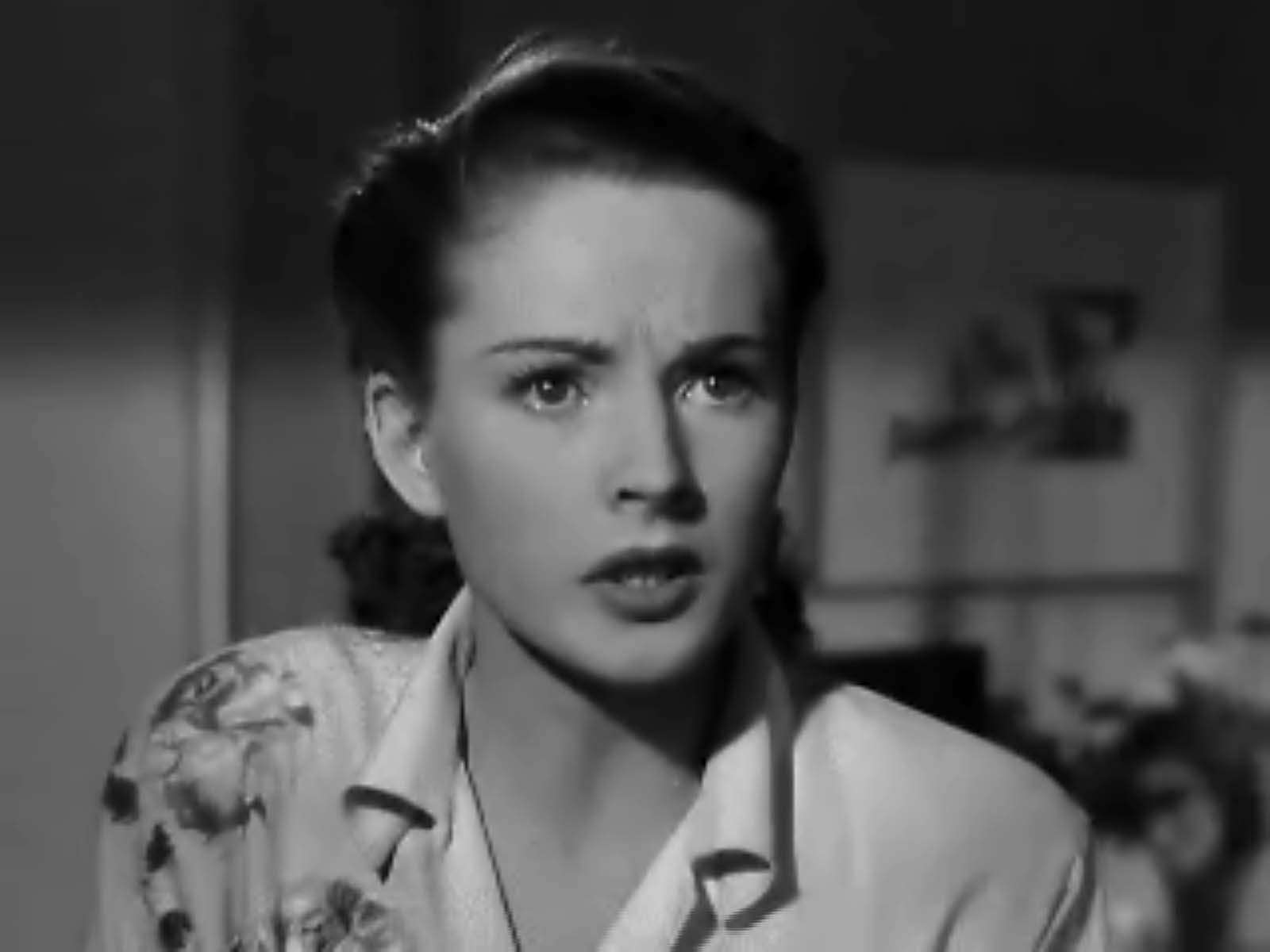
- Helen Walker as Lilith
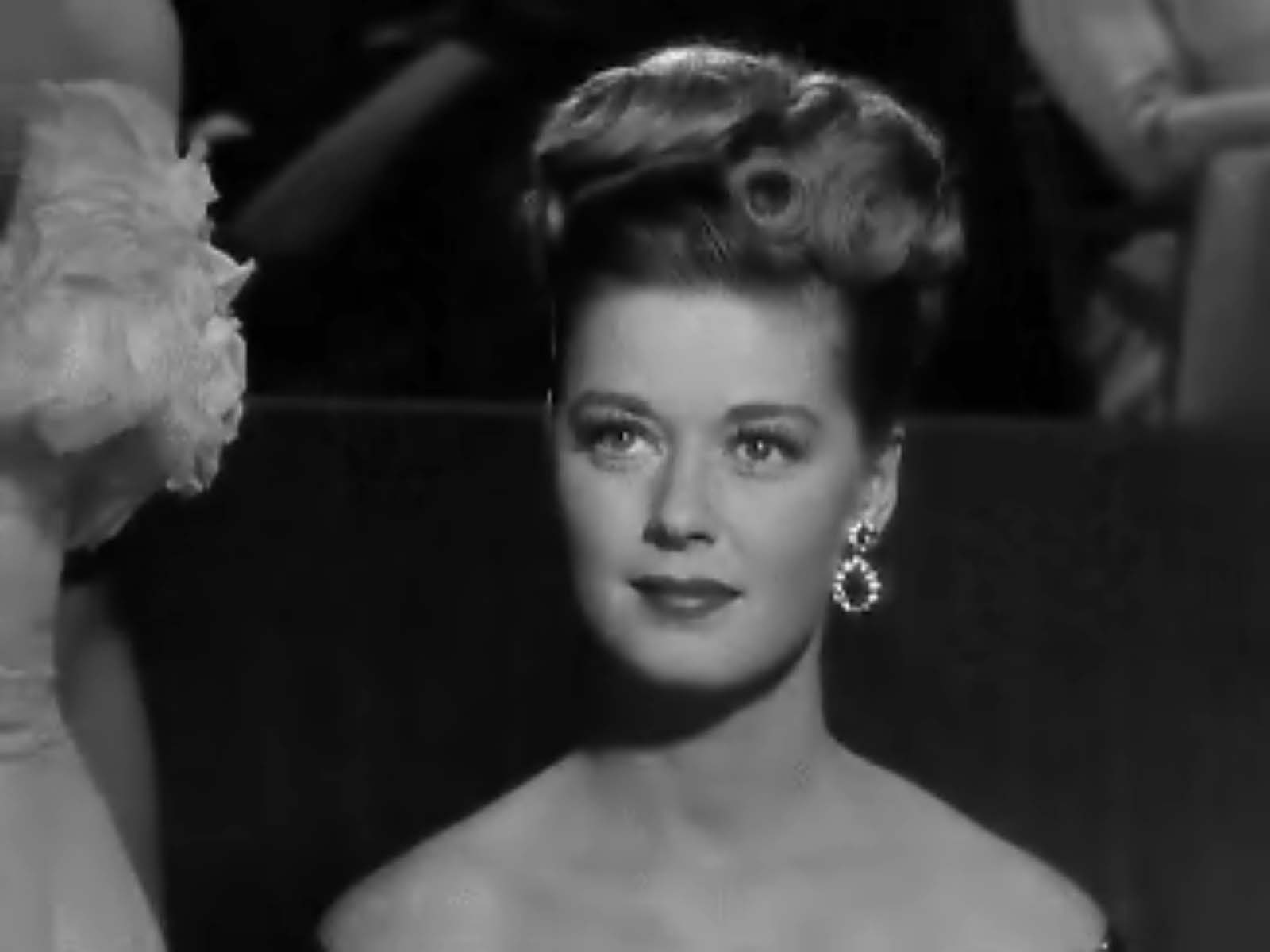
- An effectively harsh portrait of big dreams turned sour

- Gray demonstrating her act as “Lightning Woman”
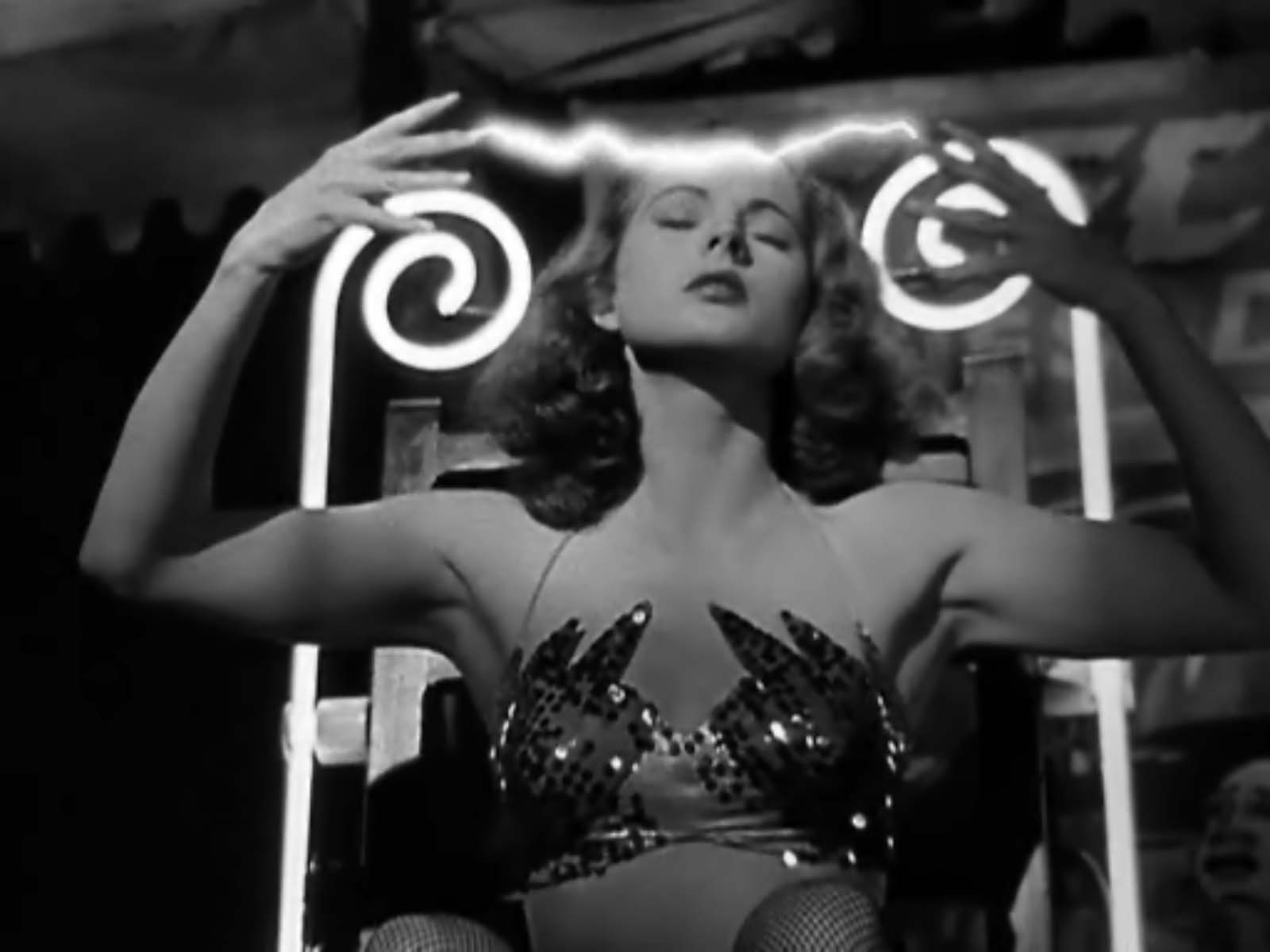
- Lee Garmes’ haunting b&w cinematography
Must See?
Yes. This film is widely regarded as a classic noir thriller, and should be seen by all film fanatics. Peary nominates it for an Alternate Oscar as one of the best pictures of the year. Discussed at length in Peary’s Cult Movies 2 (1983).
Categories
- Genuine Classic
- Noteworthy Performance(s)
Links:
|







One thought on “Nightmare Alley (1947)”
A definite must – and, if you haven’t seen it in a while, going back to it may prove fascinating (again). I’d actually forgotten how complex this tale is – and, even after it was over, I wasn’t completely sure what was real and what wasn’t (a fitting state of mind in which to be left).
Here’s a movie that starts out a bit slow but gains momentum, getting better, more layered as it progresses and taking unexpected turns – esp. as it goes from trashy to classy and back again. (With its marked interest in spiritual matters, it also serves as a worthy companion piece to ‘The Razor’s Edge’, which Power and director Goulding made the year before. ‘NA’ is ‘Razor’s’ evil twin.)
As the assessment notes, the crisp b&w photography is highly atmospheric. Special mention should also be made of the production design (esp. the very believable carnival sequences).
The cast is uniformly good – with Power, of course, the standout; it’s creepy to realize his character knows that mapping out an angle requires paying close attention to people. Goulding bolsters Power’s work via careful guidance of actors we’re less accustomed to seeing at the top of their game (Blondell, Gray, Walker, Ian Keith – even Mike Mazurki!).
Unfortunately, the ending smacks of studio interference and betrays the trajectory of the story – note this midway exchange:
Power: Wasn’t that Pete’s [tarot] card?
Blondell: Sure. Now it’s yours.
I suppose that’s a smaller price to pay; it’s amazing that this film got made and released at all – in 1947!
Fave scene: During Power’s nightclub act, Walker tries to trip him up with a phony question.
Sidebars:
-check imdb for odd details of Helen Walker’s life/career.
-William Lindsay Gresham – the novel’s author – was married to Joy Davidman…until he abused her enough to send her into the life of C.S. Lewis.